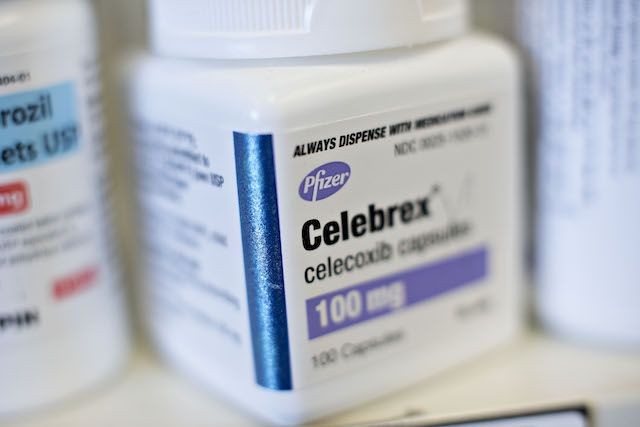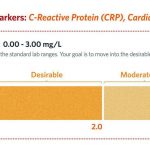
Contents
Celebrex vs. Mobic
Celebrex (celecoxib) and Mobic (meloxicam) are nonsteroidal anti-inflammatory drugs (NSAIDs) used to treat arthritis, pain, menstrual cramps, and colonic polyps. Prostaglandins are chemicals that contribute to arthritis inflammation, causing pain, fever, swelling, and tenderness. Celebrex and Mobic inhibit the enzyme that produces prostaglandins (cyclooxygenase 2), resulting in lower levels of prostaglandins and reduced inflammation and associated symptoms.
Side Effects of Celebrex and Mobic
Celebrex
The common adverse effects include:
Other side effects may include:
- fainting,
- kidney failure,
- heart failure,
- aggravation of hypertension,
- chest pain,
- ringing in the ears,
- deafness,
- stomach and intestinal ulcers,
- bleeding,
- blurred vision,
- anxiety,
- photosensitivity,
- weight gain,
- water retention,
- flu-like symptoms,
- drowsiness, and
- weakness.
Celecoxib, like other NSAIDs, may cause stomach and intestinal ulcers at any time during treatment. Unlike other NSAIDs, celecoxib does not affect blood platelet function, clotting, or bleeding time.
Allergic reactions can occur with celecoxib, particularly in individuals who have had allergic reactions to sulfonamides, aspirin, or other NSAIDs.
NSAIDs (excluding low-dose aspirin) increase the risk of heart attacks, stroke, and related conditions. This risk is higher in patients with underlying risk factors for heart and blood vessel conditions and with prolonged NSAID use. NSAIDs should not be used to treat pain resulting from coronary artery bypass graft (CABG) surgery. NSAIDs also carry an increased risk of serious stomach and intestinal adverse reactions such as bleeding, ulcers, and perforation. Elderly patients are at higher risk for these reactions.
Mobic
WARNING
- Individuals allergic to NSAIDs or with asthma are at increased risk of serious allergic reactions to NSAIDs.
- New onset or worsening of high blood pressure may occur during Mobic treatment.
- Mobic may cause fluid retention and swelling, so caution is advised in patients with heart failure.
- Mobic may reduce kidney function and should not be used in patients with severe kidney failure. Caution is advised in the elderly, patients with heart failure, liver dysfunction, and those taking diuretics, ACE-inhibitors, or angiotensin II antagonists.
- Serious skin reactions such as exfoliative dermatitis, Stevens-Johnson syndrome, and toxic epidermal necrolysis may occur without warning.
- NSAIDs (except low-dose aspirin) may increase the risk of potentially fatal heart attacks, stroke, and related conditions in people with or without heart disease or risk factors for heart disease. The risk may occur within the first week of use and with longer use.
- Central nervous system effects including drowsiness, dizziness, and blurred vision may occur in patients taking NSAIDs.
Dosage of Celebrex vs. Mobic
Celebrex
The lowest effective dose is recommended. Dosages include:
- Osteoarthritis: usually 100 mg twice daily or 200 mg once daily.
- Rheumatoid arthritis: usually 200 mg twice daily.
- Acute pain or menstrual cramps: 400 mg on the first day, then 200 mg twice daily as needed.
- FAP: 400 mg twice daily.
Mobic
The lowest effective dose is recommended. Meloxicam therapy usually starts at 7.5 mg daily, but some patients may require 15 mg daily under a doctor’s guidance. Juvenile rheumatoid arthritis is treated with 0.125 mg/kg daily up to 7.5 mg per day. Meloxicam can be taken with or without food.
Drug Interactions with Celebrex and Mobic
Celebrex
Concomitant use with aspirin or other NSAIDs may increase the occurrence of stomach and intestinal ulcers. Celecoxib can be used with low-dose aspirin.
Fluconazole increases celecoxib concentration in the body by inhibiting its liver elimination. Celecoxib treatment should start at the lowest recommended doses in patients taking fluconazole.
Celecoxib increases lithium concentration in the blood, which can lead to lithium toxicity. Lithium therapy should be closely monitored during and after celecoxib treatment.
Co-administration of celecoxib and warfarin (blood thinner) requires careful monitoring of blood effects in the first few days of treatment.
NSAIDs may reduce the blood pressure-lowering effects of antihypertensive drugs.
Excessive alcohol consumption may increase the risk of stomach ulcers when taking NSAIDs, including celecoxib.
Mobic
Meloxicam may increase lithium blood levels, leading to lithium toxicity.
Meloxicam may reduce the blood pressure-lowering effects of antihypertensive drugs.
In combination with methotrexate or aminoglycosides, meloxicam may increase blood levels of these drugs, potentially resulting in more side effects.
Meloxicam exacerbates cyclosporine’s negative effect on kidney function and reduces the effect of furosemide and thiazide diuretics due to prostaglandin inhibition.
Meloxicam should be avoided by patients with a history of asthma attacks, hives, or other allergic reactions to aspirin or other NSAIDs.
Excessive alcohol consumption may increase the risk of stomach ulcers when taking meloxicam or other NSAIDs. Cholestyramine, colestipol, and colesevelam may decrease meloxicam’s effectiveness.
Meloxicam oral suspension contains sorbitol and should not be combined with sodium polystyrene sulfonate (Kayexalate) to avoid fatal intestinal necrosis.
Safety of Celebrex and Mobic During Pregnancy or Breastfeeding
Celebrex
Celecoxib has not been studied in pregnant women. Animal studies have shown harm to the fetus at doses twice the recommended maximum dose. It should be avoided in late pregnancy due to the risk of heart defects in newborns. Celecoxib should be used during pregnancy only if the benefits outweigh the potential risk to the fetus.
Celecoxib is secreted in breast milk, so nursing mothers should avoid it or discontinue breastfeeding.
Mobic
No studies have been conducted on meloxicam therapy in pregnant women. It should generally be avoided in the first and second trimesters due to potential fetal birth defects. Meloxicam should be avoided in the third trimester due to the risk of ductus arteriosus closure.
No studies have been conducted to determine if meloxicam is excreted in breast milk.
Summary
Celebrex (celecoxib) and Mobic (meloxicam) are nonsteroidal anti-inflammatory drugs used to treat pain, fever, swelling, and tenderness caused by arthritis. Celebrex is also used for familial FAP, acute pain, and menstrual cramps.


